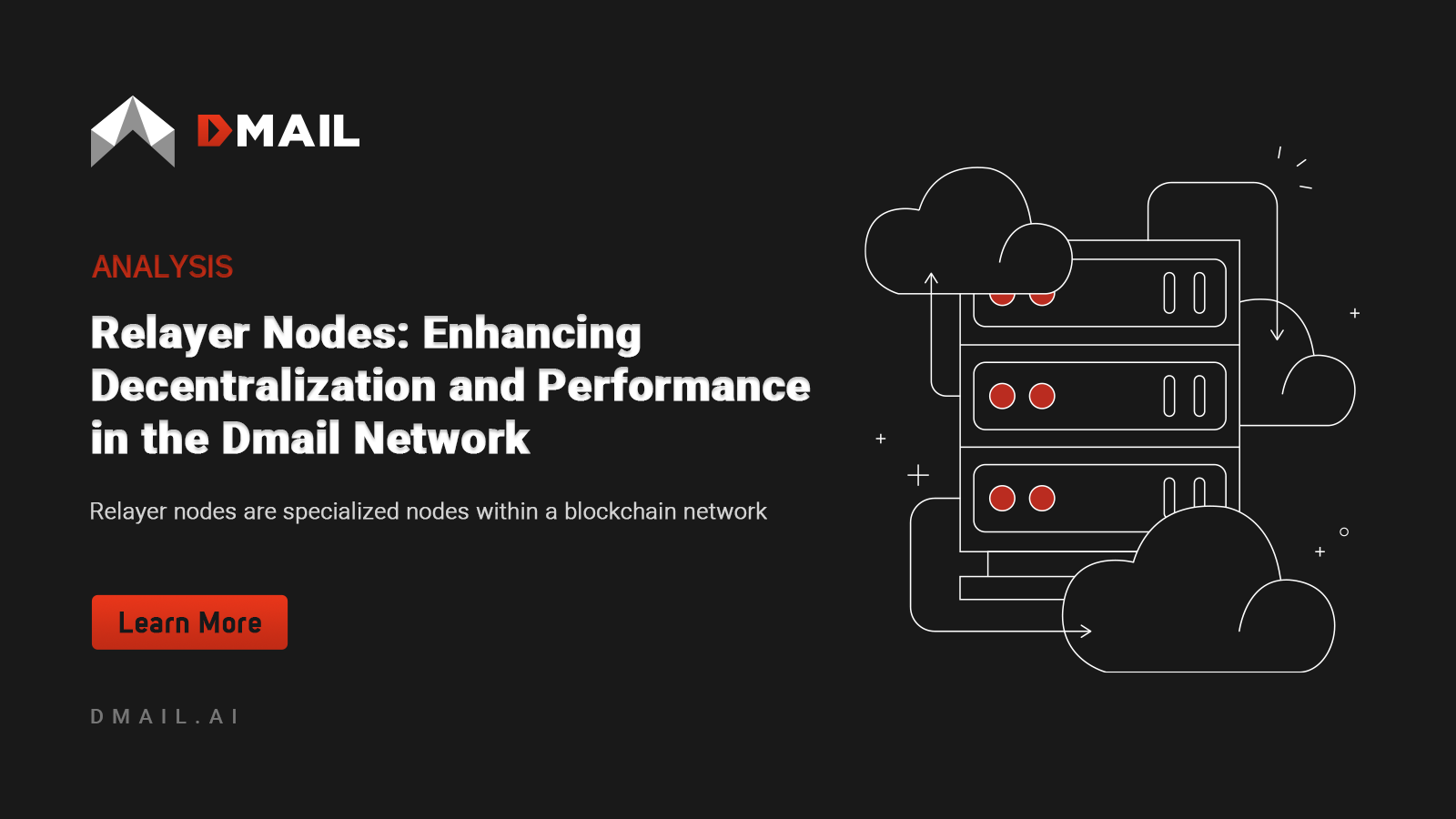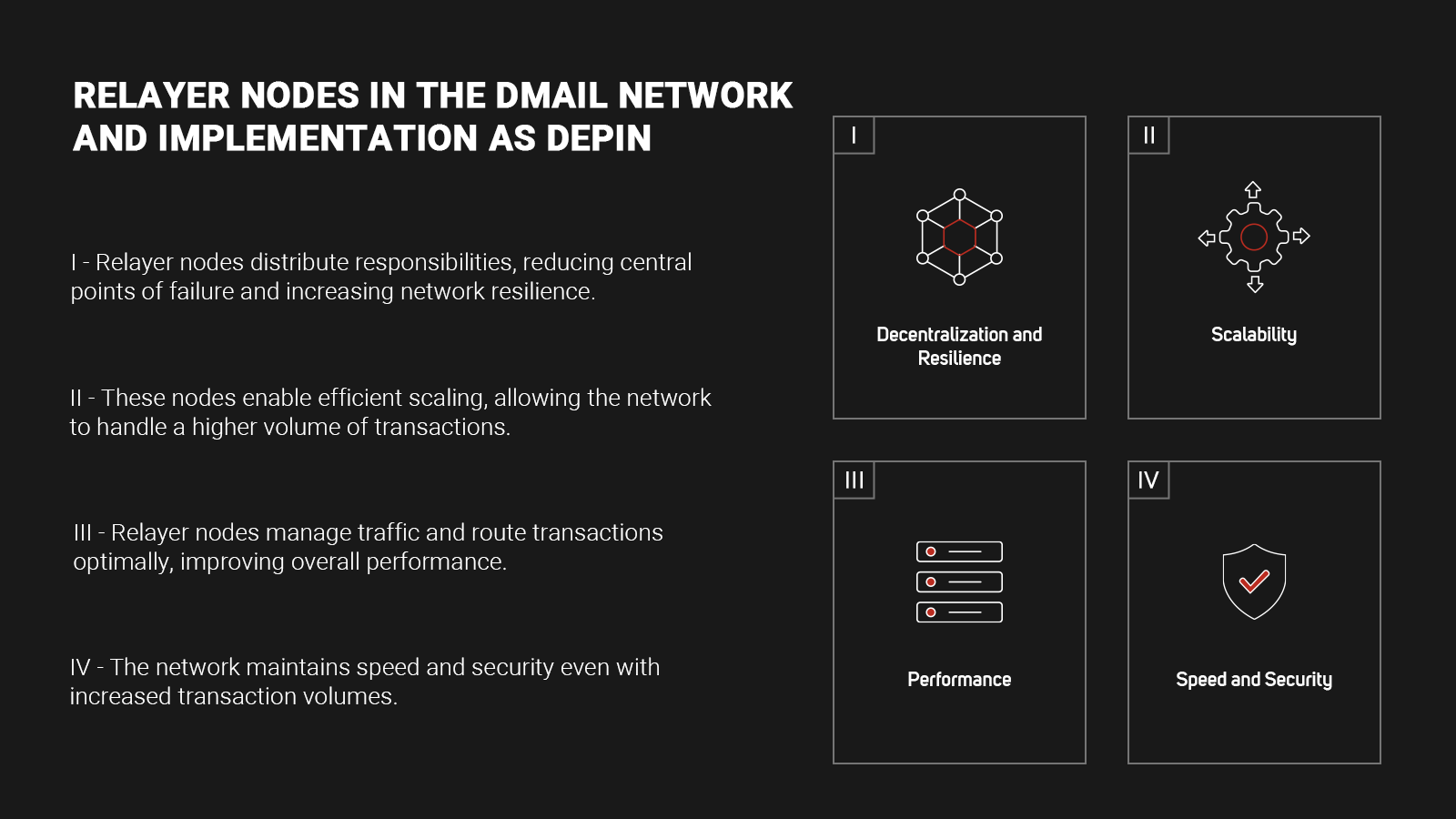Relayer Nodes: Enhancing Decentralization and Performance in the Dmail Network
Relayer nodes are specialized nodes within a blockchain network responsible for facilitating and optimizing the communication and transaction processes.

The blockchain landscape is rapidly evolving, with innovative solutions addressing challenges of scalability, decentralization, and performance. The Dmail Network, a pioneering web3 communications protocol, is at the forefront of this evolution. A critical component in this advanced infrastructure is the relayer node. This article explores what relayer nodes are, their role within the Dmail Network, and how they contribute to decentralization and performance.
What are Relayer Nodes and What is their Function?
Relayer nodes are specialized nodes within a blockchain network that facilitate and optimize communication and transaction processes. Unlike standard nodes that validate transactions and maintain the blockchain ledger, relayer nodes perform additional tasks such as transaction routing, data relaying, and network optimization. By managing these functions, relayer nodes enhance the overall efficiency and performance of the network.
Relayer nodes perform several key functions. They aggregate multiple transactions into a single batch, reducing network load and minimizing transaction fees. They facilitate off-chain communication, allowing the network to interact with external data sources and services securely. They also balance network load by distributing transactions evenly, preventing any single node from becoming a bottleneck, and they enhance privacy by obfuscating transaction origins.

Relayer Nodes in the Dmail Network and Implementation as DePIN
In the context of the Dmail Network, relayer nodes are crucial for enhancing both decentralization and performance. By distributing responsibilities across multiple nodes, relayer nodes reduce the risk of central points of failure and enhance the network's resilience. They enable the network to scale efficiently, handling a higher volume of transactions without compromising speed or security. Additionally, with relayer nodes managing traffic and routing transactions optimally, the overall performance of the Dmail Network is significantly improved, ensuring fast and reliable communications.
The concept of DePIN (Decentralized Physical Infrastructure Networks) involves integrating physical infrastructure into decentralized networks. For the Dmail Network, implementing relayer nodes as DePIN means deploying them across various geographical locations to ensure global coverage and reduce latency. This approach encourages community members to run relayer nodes, fostering a decentralized and community-driven network. Incentives for relayer node operators, such as token rewards or transaction fees, ensure the network remains robust and efficient.
Benefits of Relayer Nodes
Relayer nodes enhance the security of the Dmail Network by obfuscating transaction origins, making it more difficult for malicious actors to trace transactions. By distributing transactions and communication, relayer nodes reduce the attack surface, making the network more resilient to attacks. They improve network efficiency by reducing latency and lowering costs through optimized routing and transaction aggregation.
Scalability and flexibility are additional benefits provided by relayer nodes. As the network grows, relayer nodes can handle increased transaction volumes without compromising performance. They can be reconfigured or upgraded to adapt to changing network requirements or incorporate new technologies.
Conclusion
Relayer nodes are a critical component in the evolution of the Dmail Network, driving decentralization, enhancing performance, and ensuring scalability. By leveraging relayer nodes as part of a DePIN strategy, the Dmail Network improves its technical infrastructure while fostering a community-driven, resilient, and efficient ecosystem. As the Dmail Network continues to innovate and expand, relayer nodes will play an increasingly vital role in supporting its mission to provide secure, decentralized, and high-performance web3 communications.

Connect with Dmail: Website | Twitter | Discord | Github | Telegram





Comments ()